Go Paperless with Constructionplace.com
Going green to constructionplace.com means reducing the carbon footprint over the United States and beyond to help improve our overall environment and overall weather conditions. The most meaningful ways of reducing the carbon footprint include. Becoming more Environmentally Sustainable by becoming Carbon Negative, Water Positive, Zero Waste, and Proactive Ecosystems; and stop Green House Emissions into the earth’s atmosphere of various gases, especially carbon dioxide, that contributes to the greenhouse effect.
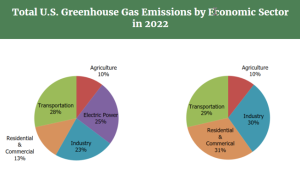
Contructionplace.com believes going more digital and using less paper for building construction documents, agreements and contracts will help reduce this carbon footprint. Not to mention saving time, money and overall project communication and transparency between Project Owners and Service Providers.
About Paper
It appears there are two views about paper usage impacting the carbon footprint (See Below) that drives our environment in the United States. Paper is one of the few truly sustainable materials in the United States. But while paper production supports sustainable forest management most of the wood isn’t used for paper production. It is used for lumber (for housing and construction). So one might say that “Paper usage actually helps the construction industry”.
Paper weight is measured by the weight of a ream of uncut paper usually with 500 sheets. The weight of paper can range from 20–140 pounds, depending on the type of paper. For example, standard office copy paper 8 ½ inches x 11 inches is 20 lb. bond, weighs about 5 lbs. and card stock is heavier and can weigh between 50–140 pounds and it is estimated that 6% of a standard pine tree, with 45ft of the usable trunk and a diameter of eight inches will produce around 10,000 sheets of paper or 20 reams (500 Sheets) of paper.

It takes about 20 years for a pine tree to mature to a paper harvest size. The fastest growth rates were for Loblolly Pine and Hybrid Aspen, and the slowest for Black Spruce, with climate, temperature and good drainage playing a large role in the growth rates. Eighty five percent (85%) of paper made in the United States comes from softwood coniferous trees.

Paper making machines usually are 10 to 25 feet wide and 50 to 100 yards long. And the five stages of paper making are:
- Chipping
- Making of wood pulp
- Spreading the pulp
- Pressing, drying and rolling the paper
- Cutting Sheets
Two Views about paper usage impacting the Carbon footprint
One view is that paper usage actually helps reduce the carbon footprint being good for the environment. While the other view is that paper usage increases the carbon footprint being bad for the environment.
Paper Usage Good for the Environment – The more paper produced from trees results in the more trees being planted. And trees keep our woodlands healthy and flourishing so that they can store carbon slowing climate change and improve soil and water quality. Papertarians have a deep love of forests and believe that choosing paper-based products and packaging is the easiest way to take care of the forests and to do right by the planet.
Paper Usage Not Good for the Environment – The more paper produced from trees is damaging to the environment because of its life cycle from beginning to end. It starts off with a tree being cut down and ends up being burned emitting carbon dioxide into the atmosphere. And the paper production process uses lots of water (A4 paper requires 10 liters of water per sheet).
Regardless of the view the paper usage in the building construction industry results in more printer and printer ink usage and associated costs such as document delivery time and vehicles emitting carbon into the atmosphere. So indirectly the production of printer ink consumes significant resources contributing to pollution. But the reduction of paper usage is possible.
For example, all bills have an option of being paid online. This not only saves time, but also helps reduce paper waste. Go paperless = Saves Trees.
Here is quick study that may help you understand how Constructionplace.com can help you save money and help save a few trees:
High yield HP 64XL compatible cartridges prints 415 pages of readable color text and images for the top-quality printing results.
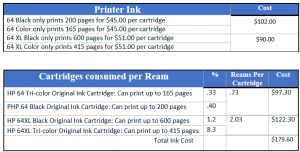
Assume a ream of 8 ½ x 11 inches print quality of paper = $10.00, Plus HP 64 Black and Tricolor Cartridge = $97.30 for a total cost of $107.30; and assume a ream of 8 ½ x 11 inches print quality of paper = $10.00, Plus HP 64XL Black and Tricolor Cartridge = $122.30 for a total cost of $132.30. Using Constructionplace.com could greatly reduce or eliminate these costs.
Commonly used paper documents in the construction industry
AIA Contracts and Documents – Annual license which gives one access to all AIA documents can cost your company over $8,000 for just 10 users ($800.00 per user annually):
- A101–2007: Owner/Contractor Agreement – Stipulated Sum
- B101–2007: Owner/Architect Agreement
- B105–2007: Owner/Architect Agreement for Residential or Small Commercial Project
- G702-1992: Payment Application
- A201-2007: Contract General Conditions for Construction
Service Agreements – A Service Agreement is a contract used between a Service Provider and Project Owner (client or customer) that outlines the exchange of services for compensation. Service Agreements can be used for one specific job or an ongoing position that doesn’t have an end date when the contract is signed. Types of contracts include:
- General Service Contract – An agreement between a Service provider and Project Owner (client). It typically outlines the scope of services to be provided, timelines for completion, payment terms, and any other important terms and conditions.
- Independent Contractor Agreement – A legal contract that outlines the scope, payment schedule, and deadlines for freelance work.
- Consulting Services Agreement – A written contract that outlines the terms and conditions of a professional service.
- Construction Contract – A mutual or legally binding agreement between a Service Provider and Project Owner based on policies and conditions recorded in document form.
Project Owners should use a Service Agreement whenever they hire a service provider to perform a paid task. The agreement establishes the exact details of the arrangement, including compensation, duties, and confidentiality, if required.
Service providers should use Service Agreements any time they perform a service for a client. The agreement protects their interests and ensures they receive compensation. It’s a good idea to document the pay rate for services, invoicing frequency, and insurance clauses.
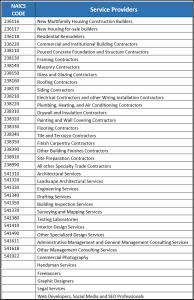
Essentials for Contracts or Service Agreements
1. Project Owner and Service Provider Profiles – Sharing profiles builds mutual trust and saves lots of time when making hiring decisions. Here are the easy fill Project Owner and Service Provider profile templates on ConConstructionplace.com with on and off-line Contact information, Terms and more.

2. Project Location – States may have labor laws that differ from others. Include which state the work is taking place because all states have local laws and building codes.

- Type of Contracts or Agreements – Most common cost types
- Lump-Sum
- Cost-Plus-Fee (sometimes referred to as Time and Materials)
- Guaranteed Maximum Price (sometimes referred to as Not to Exceed)
- Unit-Price
- Scope of work – Description of Work to be done. An accurate description of exactly what the service provider will do will reduce or eliminate the risk of misunderstandings later. An accurate description of services gives the Service Provider and Project Owner a clear idea of what both parties need to do to successfully complete the project.
- Terms and Compensation – Expectations and how compensation will be exchanged
- Pay rate – Compensation paid to service providers for work successfully completed
- Sale tax – If it is included or not included in the price quoted
- Payment schedule – Describe when the Project Owner will make payments to the Service Provider. The options available depend on the duration of your contract. A one time job is usually paid when the job is finished. Higher value construction contracts often have a customized payment schedule based on completing various stages of the work (Paying for Performance). Open ended contracts with no fixed end dates feature periodic invoicing and payments.
- Late Payment Fees – Typically 15 to 30 days is sufficient time to pay an invoice. If the customer doesn’t pay the amount they owe within the time frame, the contractor can apply an interest rate on late payments up to 25% per year on unpaid sums. But Usury laws excessive interest rates, regardless of the Service Agreement’s terms. An interest rate that exceeds the maximum rate permitted by state law isn’t enforceable.
- Consequences of non-performance – In cases of non-performance the creditor can ask for performance and compensation for the delay, or to claim damages. In cases of non-performance of monetary obligations the creditor is entitled to interest.
- Billing Details – How to process the payments
- Deposit – If a deposit is required or not
- FOB – Freight on Board or when the responsibility for the item changes hands such as
- Reimbursable Expenses – Amounts expended for or on account of the project which, in accordance with the terms of the appropriate agreement, are to be reimbursed by the owner.
- Intellectual property – Sometimes Service Providers get innovative while performing their services. While it is generally understood that drawings and specifications belong to the originator usually Architects, Designers and Engineers it is a good idea to specify who will own the intellectual property produced during the service between the Service Provider and Project Owner.
- Confidentiality – You may choose to include terms addressing confidentiality. This will depend on whether the Project Owner prefers to add this clause to protect sensitive information about themselves or their business.
- Insurance – Types of Insurance required and there limits
- Bonding – Types of bonds require if any. Usually High Value construction projects or most federal and local governments.
- Signing details – Usually construction agreements are signed or accepted before they begin. So this does not apply.
- Changes in the Work – Once a contract has been executed the scope of the work can basically be changed by adding additional work or removing (deducting) work from the project such as changing the scope of work or schedule by Change Order. The first step is to initiate a Change order proposal which can be initialed by the Project Owner or Service Provider. Usually the Project Owner will initiate a change to reduce cost and the Service Providers for unforeseen conditions or building department requirements. But it most important that the costing terms (usually cost plus a percentage) for adding or deducting work are included in the agreement because the Service Provider most likely will want a fee for making the change. Once the change order proposal has been approved it becomes a change order.
Below is how the above essentials are collected using Constructionplace.com. These RFP and Bid Forms contain fields for the user’s selection and then that information is automatically populates into a paperless virtual Agreement.
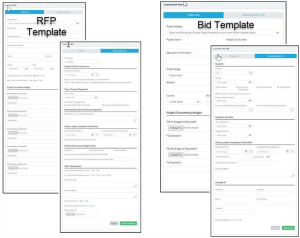
This is a PDF Agreement generated from the final bid accepted with all accepted terms:
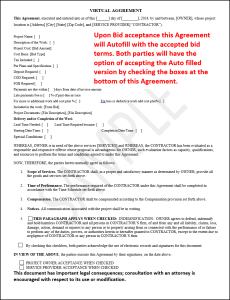
Both parties can simply check two boxes to ratify the agreement. Any related project documents can be included in the respective RFP and Bid forms during the bidding process.




